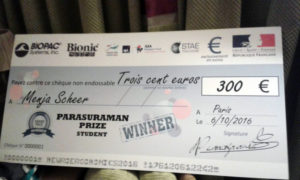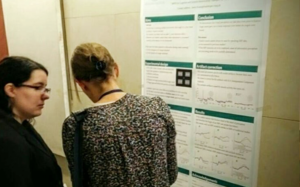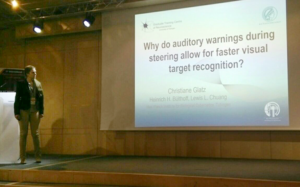A motley crew of psychologists, neuroscientists, clinicians, engineers, computer scientists and other specialists congregated in an unlikely place – the headquarters of AXA Life Insurance in Paris, France. It was the 1st International Neuroergonomics Conference.
What is Neuroergonomics? More importantly, do we need more conferences to attend?
Neuroergonomics is a term popularised by the late Prof. Raja Parasuraman and his collaborator Prof. Matthew Rizzo. In their book, “Neuroergonomics: The brain at work”, they argued persuasively for the need to employ modern neuroimaging techniques to identify risks at the workplace even when such risks were not (yet) apparent in physical performance. This supports the sensible adoption of new methods and technologies for improving work efficiency, without compromising the unseen wellbeing of the users themselves. Raja Parasuraman’s own work addressed how long periods of monitoring visual information could result in mental fatigue (Parasuraman, 1979; Nuechterlein, Parasuraman, Jiang, 1983). This is a critical topic, especially with work interfaces that present lots of complex and abstract visual information that is constantly changing, such as air traffic monitoring systems. He was particularly interested in the role of technology in changing the way in which our minds worked (Parasuraman & Riley, 1997). He was a pioneer in his reliance on psychological theories to understand the challenges posed by a changing technological landscape, and in his determination to back up his beliefs with neuroimaging and behavioral data. We are honoured that Ms. Menja Scheer, a PhD student with the SFB-TRR-161, was awarded the 1st Parasuraman student award for her paper, titled: Attending to the auditory scene improves situational awareness.
Ms. Menja Scheer’s work addresses a risk that over-compelling visualisations can pose. Previous research have reported instances where the use of heads-up displays can cause pilots to be “inattentionally blind” to important visual events in the real world – for example, another plane on the flight path (Haines, 1991)! In her work, she introduced a simple auditory task that did not compromise visual-motor steering but, nonetheless, amplified her participants’ brain response to unexpected auditory events in the environment. In related work, my student, Ms. Christiane Glatz, demonstrated how auditory alarms could be designed to heighten brain responses to visual stimuli. Ms. Nina Flad, a SFB-TRR-161 PhD student, also presented her research that addressed how peripheral visual information can sometimes result in brain responses, even before we move our eyes to look at the information itself.
Finally, I had the honour of giving a plenary talk, ”Driving headlong into the uncanny valley of autonomous driving”, wherein I addressed the potential dangers that a transition from manual to fully automated driving will pose to consumers who fail to understand the real capabilities of assisted driving technologies. In this talk, I was able to explain how immersive virtual environments could serve as a vital tool in prototyping and evaluating the utility of novel visualisation technologies, such as heads-up displays, that are designed with the intention of assisting drivers but could unintentionally distract them from critical tasks instead.
The International Neuroergonomics Conference was unique in how it drew an eclectic audience that shared a common purpose. Neuroergonomics is neither psychology, neuroscience, nor engineering. Neuroergonomics researchers care about risks to mental well-being, even in situations where performance decrements are not observable. They make inferences that are relevant to operational concerns, which are based on established models of how the brain works.
The research presented demonstrated a willingness to accept the practical challenges inherent to “real-world” testing. Last, but certainly not least, they seek to understand the human mind as an entity that is bound to adapt to novel technology and workspaces and, in doing so, influence the development of technology to tailor the human mind.
References
Haines, R. F. (1991). A breakdown in simultaneous information processing. In Presbyopia research (pp. 171-175). Springer US.
Nuechterlein, K. H., Parasuraman, R., & Jiang, Q. (1983). Visual sustained attention: Image degradation produces rapid sensitivity decrement over time. Science, 220, 327–329.
Parasuraman, R. (1979). Memory load and event rate control sensitivity decrements in sustained attention. Science, 205, 924–927.
Parasuraman, R., & Riley, V. A. (1997). Humans and automation: Use, misuse, disuse, abuse. Human Factors, 39, 230–253.
Parasuraman, R., & Rizzo, M. (2007). Introduction to neuroergonomics. Neuroergonomics: The brain at work, 3-12.




